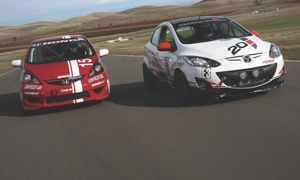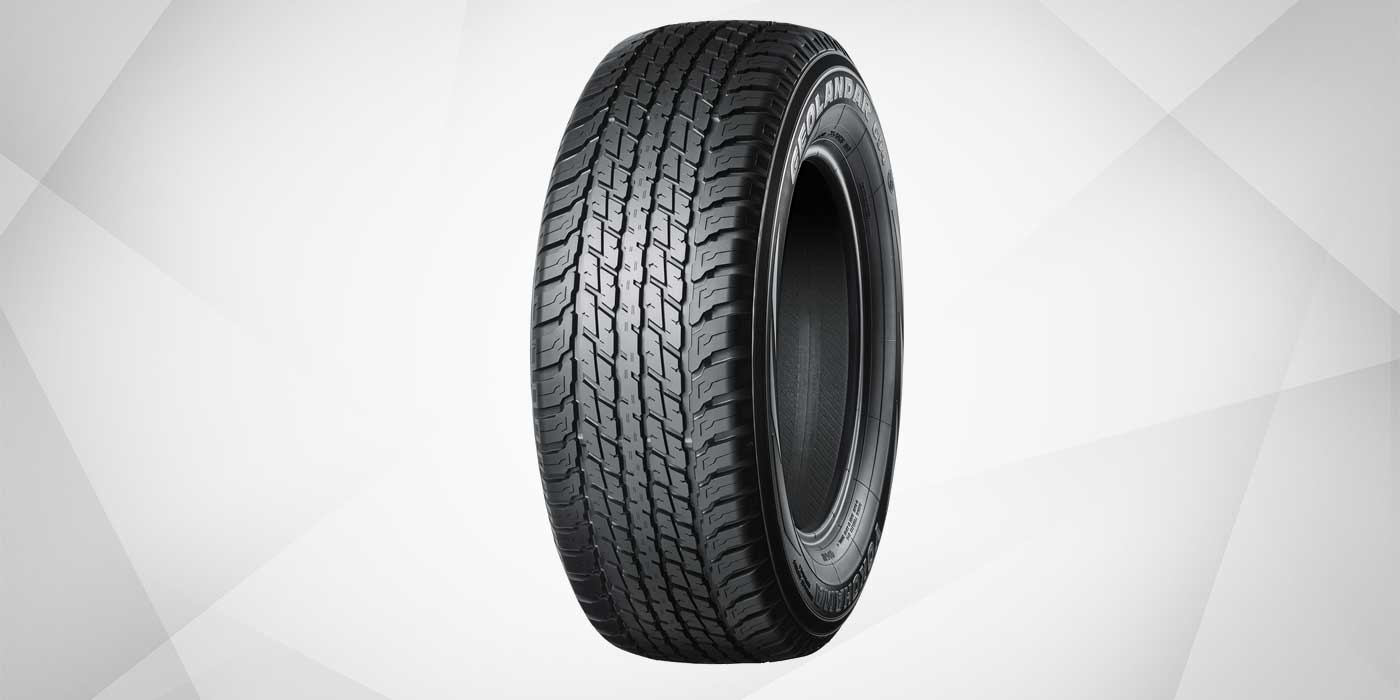Racecar drivers may be all about pushing limits. But pushing the limits in tire selection can be kind of a, well, "slow" thing to do.
"Often racers can over-tire a car, meaning they get too much tire for their vehicle or wheel to handle, and performance suffers," says Ken Payne, motorsports technical director at Michelin North America. "When a customer is in the market for a DOT racing tire, the first course of action is to find out what car they’re racing, how they will use this vehicle both on track and off, and then match their overall usage to the right tire."
Determining those things, however, can evolve considering recent changes in the DOT racing-tire segment.
"Street competition tires have seen substantial growth largely driven by low-cost endurance racing, track days and auto-crossing," Payne explains. "The extreme performance category has seen the biggest jump, and earlier this year MNA launched its BFGoodrich G-Force Rival in this category for the budget car-racing segment. We’ve seen quick market penetration with this tire and successful returns in several classes requiring a 140-or-greater UTQG tire. Our G-Force R1 and R1S products are also in the market for DOT competition tires.
"Over the next few years, we will see this trend continuing to increase, with the larger demand for tires between 18 and 20 inches," he says.
Marc Sanzenbacher, senior manager of the competition performance products division at Toyo Tire USA, agrees that knowing the right product for each car is imperative.
"Become familiar with the requirements for specific classes by sanctioning bodies," he advises. "First determine whether a tire brand or product is specified for a class. There may also be treadwear restrictions set forth by a sanctioning body for a specific class. Nowadays, most of that information can be derived from the websites of racing organizations."
Toyo, the official tire of the National Auto Sports Association (NASA), has addressed recent changes in the segment with several new products. Last year, it introduced the Proxes RR, a 40-UTQG DOT competition tire with a symmetric two-groove design. Meanwhile, the Proxes R888 and RA1 have become highly popular in such racing categories as SCCA amateur racing and Time Attack.
In addition, the Proxes TQ street-legal drag radial features a dual-purpose low-void asymmetric tread design for use on both independent rear-suspension and straight-axle cars. Rather than being carried in a trunk, it can conveniently be driven to the track while remaining highly competitive.
"We continue to research and further develop our product offerings," Sanzenbacher says. "The Proxes RR is molded to a 4/32-inch tread depth to allow racers to install them for dry competition without the need for shaving. They even have a sidewall marking area for noting corners and pressures, keeping the unique needs of racers in mind."
"The technology is rapidly evolving," Payne agrees, "in particular the compounding of the tire. For our BFGoodrich street/race tires, the advancements we see in motorsports often evolve into our consumer DOT products.
"With our G-Force Rival, we reinforced the internal structure to reduce sidewall flex to positively impact steering response," he says. "Other structural advances include asymmetric tread with large, solid tread blocks on the outside shoulder to optimize cornering grip needed for track days. The design also brings the tread’s silica-infused compound farther down the shoulder to increase grip. Many of the tools used to design, and materials used to manufacture, our DOT competition tires have directly evolved from technologies developed in higher levels of motorsports."
A Breed Apart
Clearly, DOT racing tires are a breed apart from standard passenger tires. Sanzenbacher says they’re more aggressive in nature but lack all-season capabilities; depending on the type and tread, any wet traction ability, for the most part. In addition, he says, some of their tread patterns have the potential to generate more noise than products designed for traditional road use.
Payne says that reduced tread depth and pattern changes designed to achieve specific performance characteristics also set DOT racing tires apart.
"From enhanced compounds and internal construction, these high-performance tires provide cornering and extreme grip as opposed to the average care tire," he says. "Often there is an optimized profile for ultra-high performance driving.
"However," he emphasizes, "there are some similarities to standard tires, including the battery of regulatory and performance tests that a tire must pass to confirm compliance with DOT requirements and meet internal standards that exceed those required by DOT."
Dealing with the differences between DOT and standard tires can open up real business potential for dealerships willing to put effort into carrying a new niche.
"This tire segment provides a great opportunity to expand a dealer’s offerings, and to position itself as a full-line dealer that embraces motorsports technology," Sanzenbacher says. "Having that tire line-up not only provides opportunities to sell tires for racecars, but those same enthusiasts rely on tow vehicles including trucks and trailers that require multiple tires. Racers also are considered to be key opinion leaders, so it’s good to develop a relationship with these people who can refer your dealership as a knowledgeable and trusted resource."
"Primarily it will get the enthusiast driver into your doors," Payne adds. "You should also see easy conversion to drive sales for racers’ other daily vehicles. These consumers are strong influencers with other buyers that impact overall sales. Carrying tires in these categories will help sales of aftermarket wheels and suspension performance tuning products. There’s also the opportunity to sell alignment services, especially if the dealer has technicians with good understanding of performance-oriented alignments."
So, what do such consumers seek when shopping for a DOT racing tire?
"In general, for asphalt racing, the driver wants ultimate grip and confidence-inspiring performance, reaching peak performance quickly," Payne says. "Tread wear also is critically important. For the off-road market, everything revolves around toughness. The need is for a tire that’s tougher than the terrain it’s being driven and raced on."
"As tires are the primary wear item for racers, Toyo recognizes that value is important for all racers who work on a limited budget," Sanzenbacher adds. "While still having the ability to win races, Proxes DOT competition tires offer good wear characteristics and very consistent performance from beginning to end of a wear cycle. That minimizes the need to make chassis set-up changes.
"And that allows them to focus on winning the race."













